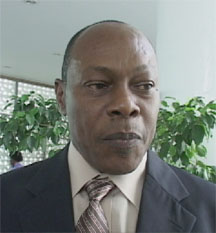The importance of Mashramani has become lost among local promoters of the heritage and artistes, according to cultural critic Al Creighton.
Creighton made the assertion in his most recent Sunday Stabroek column, which was titled “Guyana Carnival: a new imitative contrivance,” where he compared the treatment of Mashramani with the now highly-advertised private sector-organised Guyana Carnival.
In the column, Creighton referred to the Guyana Carnival as a “superficial imitation” of its Trinidad counterpart, while stating that it “has nothing new and is only thinly based on cultural tradition.”
He gave an overview of Carnival in Guyana and noted its start with an independence carnival staged by the Jaycees in 1966, which moved from Georgetown to Linden and later evolved into Mashramani—a celebration of Republic Day.
Creighton noted that the original independence carnival drew inspiration from practices present in the country prior to independence, such as float parades, steel bands, calypso, the Band of the Year competition and street revelry, then known as “tramping.” He also pointed out that while a “J’ouvert equivalent” existed, it was known as “fore-day morning jump-up” and involved revelers tramping behind steel bands.
“One of the ironies is that the framers sought to remove the elements of imitation and borrowings from the Trinidad carnival. A number of things were modified, and others included, which they felt were more appropriate for an independent republic in a post-colonial context with its new ‘indigenous’ name Mashramani. Ironically, this has come full circle, and Guyana is now adopting wholesale, the carnival imitation shunned in 1970. The independence carnival has returned,” Creighton stated.
He suggested that the same enthusiasm and fervor placed into the hosting of the Guyana Carnival could rightly be directed toward Mashramani.
“The greatness emblazoned in the Trinidad carnival is what Guyana now seeks to reproduce in a fairly superficial fashion. But Trinidad allowed its carnival to grow through many decades of turmoil and struggle to evolve to its present throne of grandeur, while Guyana puts its own tradition in peril in order to glorify and build a borrowed one,” Creighton wrote.
He noted the obvious presence of popular local artistes in the staging of Guyana Carnival, and juxtaposed it to their visibility during the Mashramani period.
“…leading Guyanese singers are now highly visible in Carnival 2018, doing commercials and appearing in shows. Timeka Marshall, Kwasi ‘Ace’ Edmondson, Adrian Dutchin, Jumo Primo, Michelle ‘Big Red’ King and Natural Black are foremost in the local industry but were missing from Mashramani. Even those who used to compete for the Mashramani Soca Monarchy no longer do so. It is as if they do not see it as important to their careers, their popularity, their achievement, ambitions, their financial earnings or their CV to compete in Mashramani. Yet they have not hesitated to be jewels in the crown of the new carnival,” Creighton commented.
Deepened irony
“The deepened irony is that these things never happen in the Trinidad carnival now being imitated. Can you imagine the huge scandal and outrage in Trinidad if Machel Montano did not bother to turn up to defend his Soca Crown? No Trinidadian Soca singer, not even the biggest international stars, considers him/herself too great or too big to compete in the carnival competitions each year,” he further stated.
Creighton concluded that Guyanese simply do not “regard Mashramani as important enough.”
“The authorities did not think it mattered that the Soca Monarchy was dropped for a few years. They did not see it as relevant to maintain consistency and traditions to make the festival work. The high energy now burning to ignite this carnival were damp coals last February at Mashramani time. If all of this fervor is expended on the premier festival each year it would undoubtedly help,” he opined.
The inspiration to host the Guyana Carnival came from Guyana’s 50th Independence Jubilee celebrations, says Chairman of the organising committee Bobby Vieira, who is hopeful that the event will be another tourism-boosting calendar activity.
The Guyana Carnival, which promises locals and foreigners 10 days of revelry, including over 20 events, was launched at the Marriott Hotel, Kingston, George-town, on Wednesday.
At the opening ceremony, the Carnival Committee had explained the rationale behind hosting an event criticised as being similar to Mashramani.
Chairman of the organising committee Vieira had said that the idea to host such an event was birthed from the 50th independence jubilee celebrations. “After the 2016 grand independence celebrations, members of Hits and Jams Entertainment felt there was a need for a festival to sustain momentum and one that should be held annually. It was from this observation and collaboration the Guyana Carnival was realised,” Vieira said. “Carnival 2018, therefore, is simply to add another festival to the annual calendar of events in order to promote tourism, entertainment and awareness for locals, members of the diaspora and visitors to enjoy,” he added.
Vieira was quick to point out that the Carnival celebrations are no competition for Mashramani and stated that the committee remains supportive of the event which celebrates Guyana’s achievement of Republican status.
According to the Chairman, there was “never a thought to replace Mashramani” from members of the committee, as he said they feel that the celebration of cultural activities, especially one marking such an achievement, is important to the nation.

